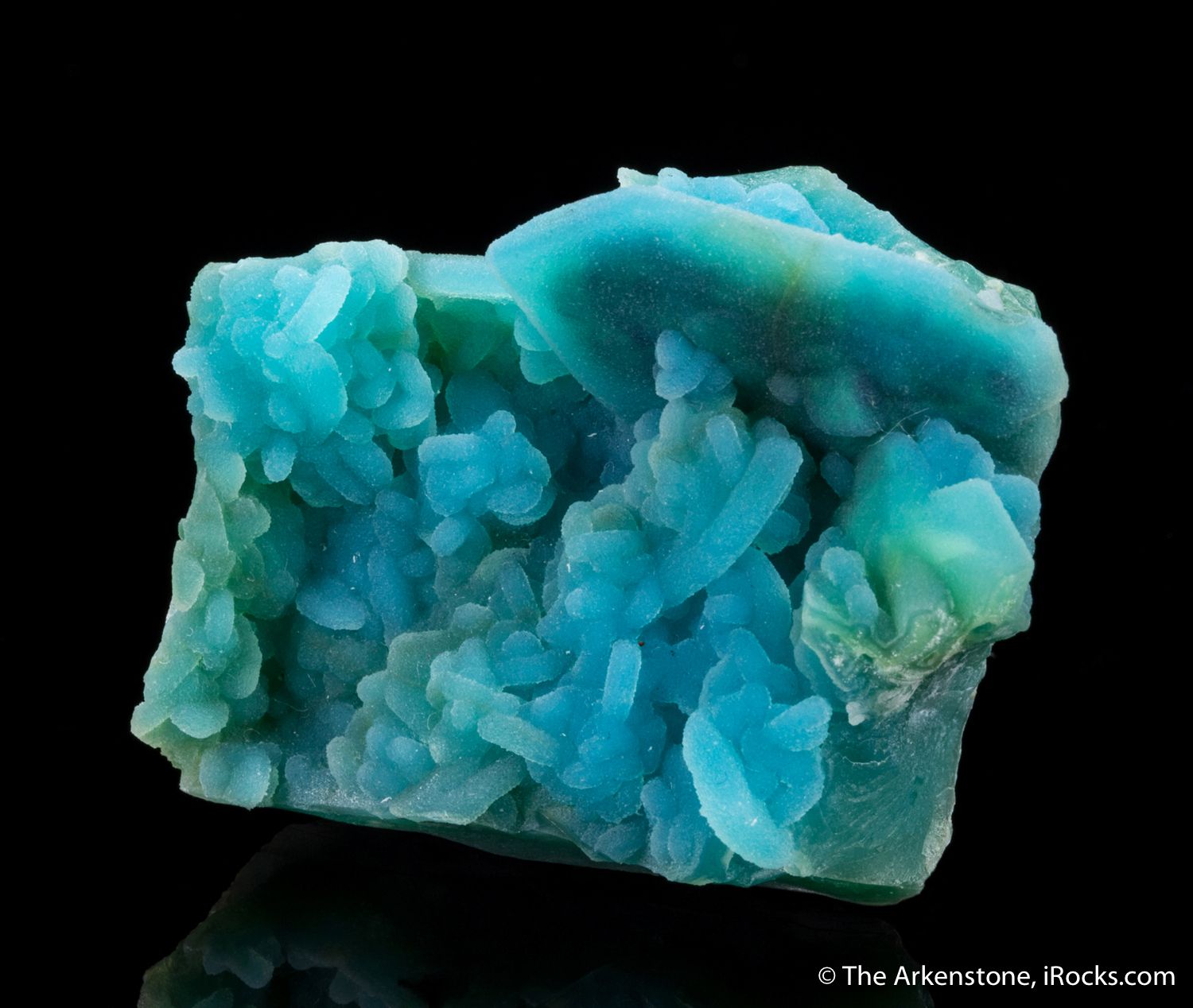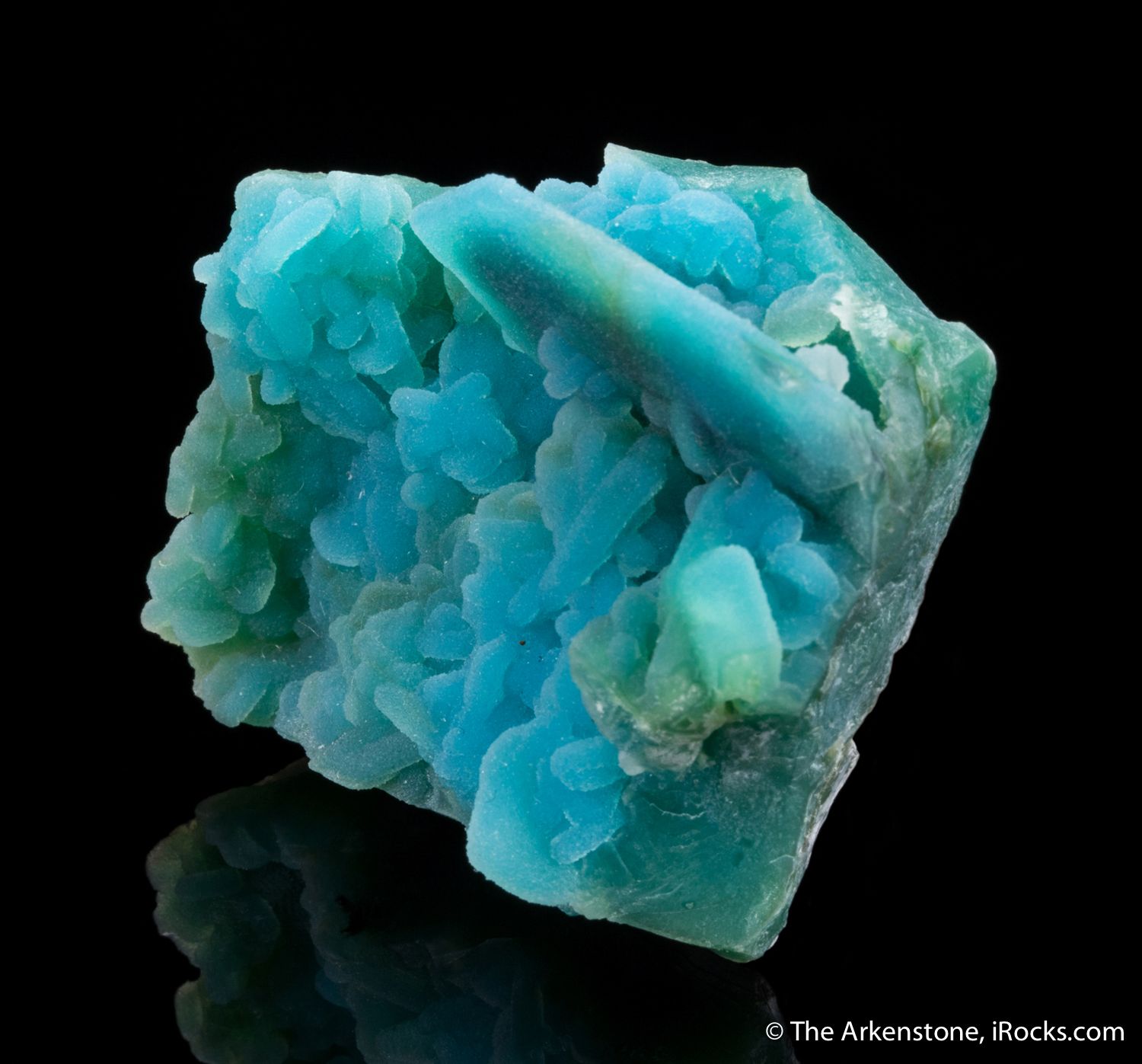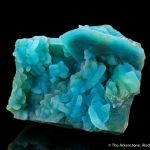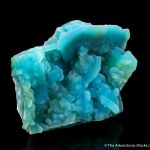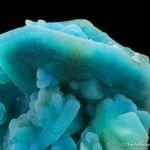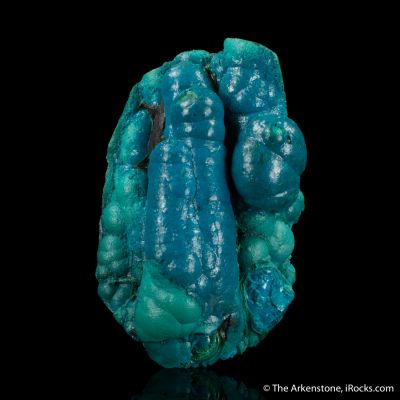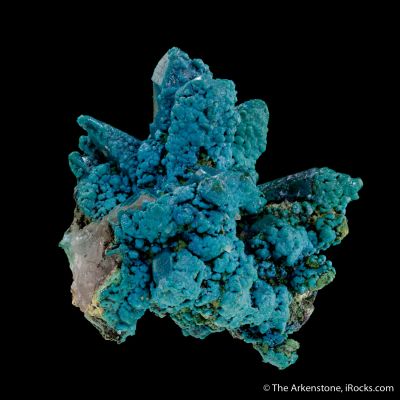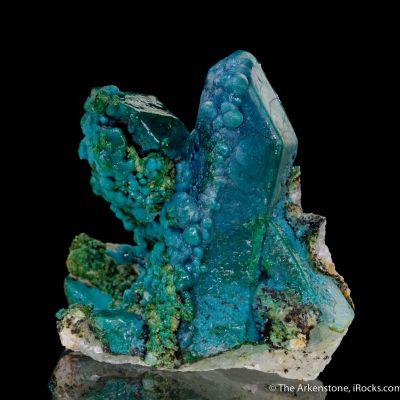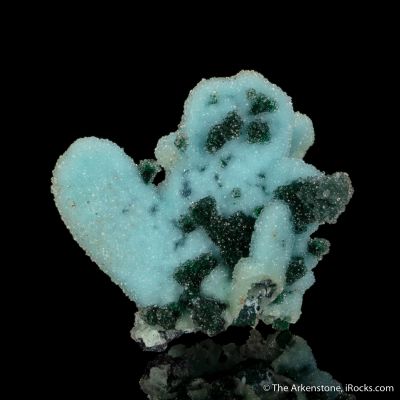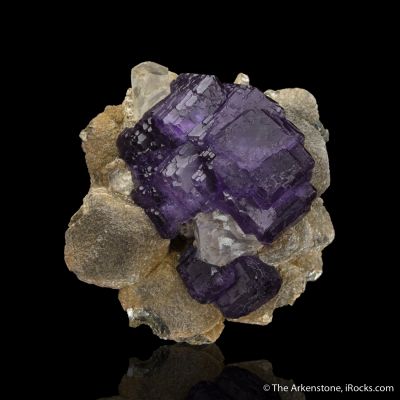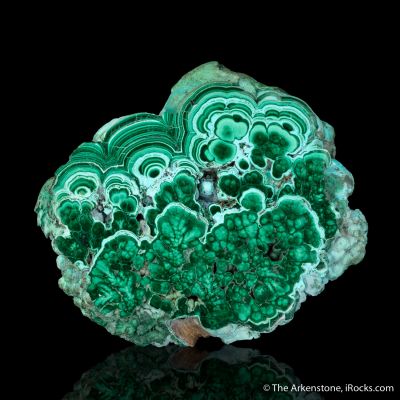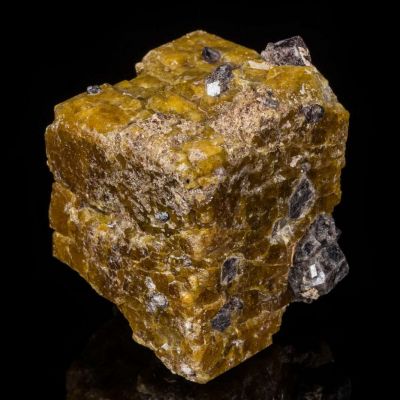- SM20-444
- Chrysocolla ps. Azurite with Quartz
- Live Oak Pit, Inspiration Mine, Globe-Miami Dist., Gila Co., Arizona, USA
- Small Cabinet, 5.5 x 4.3 x 2.5 cm
- Ex. Dr. Wouter Van Tichelen
- SOLD
Some of nature's most beautiful pseudomorphs are these rare chrysocolla ps. azurite specimens from the Live Oak Pit at Inspiration. The icing on these crystals is figuratively and literally, a thin coating of tiny quartz silica that formed over the chrysocolla, which both protects the soft crystals in a "candy shell" and gives them a sparkly, sugar-like luster when they otherwise would have no luster at all. In this case the matte-lustered chrysocolla has replaced azurite crystals, one of which was an unusually fine and large doubly terminated crystal, measuring 3.4 cm across. The color is shockingly blue and the big crystal is actually translucent! The color varies from a rich sky blue to a teal blue in saturation. This specimen stands above most others for the dominant single large crystal, and the lack of damage on the display side of the specimen (most come from small pockets, with inevitable damage or contacts). I trimmed this down in size (with a bit of risk!) from a larger specimen with considerable damage around the periphery, to highlight this core region and make the single major crystal stand out more dramatically. The result, I think, is one of the more beautiful and balanced examples of this material. Very few have come out, in this quality, since decades: According to mindat.org: "Mineralization also involves the copper silicate Live Oak vein. All outcrops of this vein has long since been obliterated by caving operations of the Inspiration Mine. The vein occupied a fissure in the sill-like body of granite porphyry facies of the granite that overlies the schist in the western segment of the Miami-Inspiration disseminated copper deposit. The chrysocolla was undoubtedly deposited by supergene solutions that collected in the fissures and contained copper leached from the surrounding rock." (see http://www.mindat.org/loc-6777.html). In other words, a rare and now vanished occurrence. Long in the well-known pseudomorph collection of Dr. Wouter van Tichelen (Antwerp).

